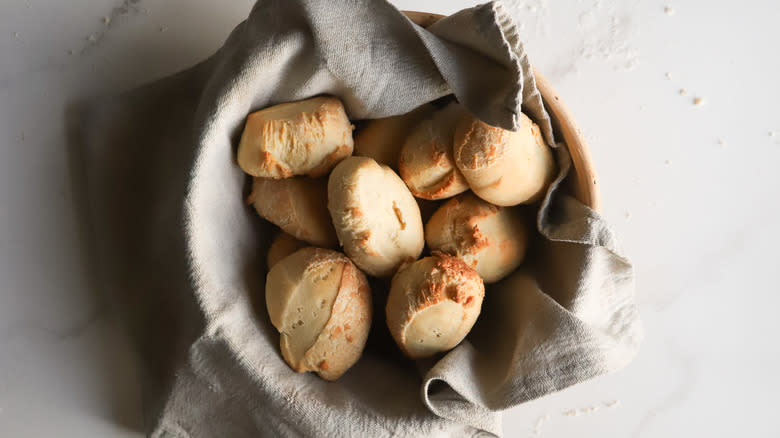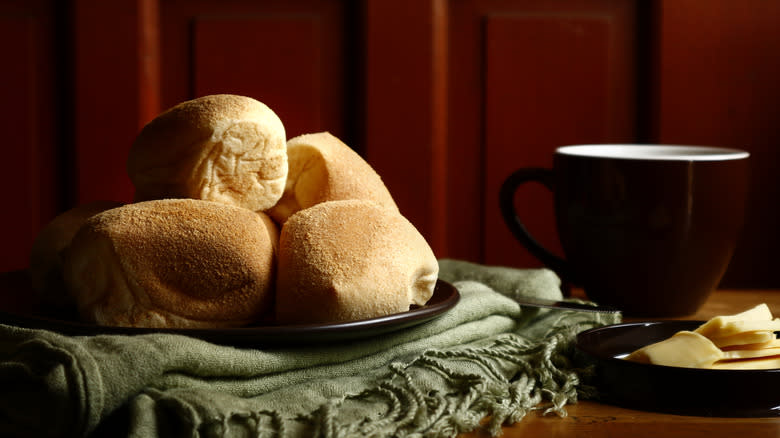Use A Sourdough Starter In Your Filipino Pandesal For A Tangier Taste

Fluffy and slightly sweet, with a crust that's lightly dusted with crumbs, pandesal is a staple in Filipino cuisine, especially at breakfast. Usually bought freshly made from a neighborhood bakery early in the morning, this bread roll is typically stuffed with savory items like slices of cheese, tocino (sweet cured pork), longganisa (garlicky pork sausage), or fried Spam because of how well it balances their saltiness. Gooey, sugary fare like jam or condensed milk can also be used as pandesal filling. Thanks to its crackly crust, the bread maintains its form even when it gets soaked with sweetness inside; even vendors use it to make "dirty ice cream" sandwiches, stuffing it with scoops of carabao milk-based ice cream. It is also dunked in instant coffee or hot chocolate for a quick, easy, and cheap breakfast or mid-day snack.
Although bakeries typically use commercial yeast to bake pandesal at a speed and a volume that meets customer demand, you can use sourdough to give your homemade version a pleasing chewiness and subtle tang. The resulting hint of sourness will further bring out the flavors of your pandesal filling, whether it's sweet, savory, or a combination of both, like ube jam layered with cheddar cheese slices. The bread will also remain light and fluffy but with a palpable improvement in its texture that makes each bite feel more substantial. Just don't forget to include pandesal's signature dusting of breadcrumbs to get the full textural experience this bread offers.
Read more: 11 Cleaning Tips For Keeping Your Oven Spotless
Adjust The Amount Of Flour And Liquid In Your Recipe When Using A Sourdough Starter

Switching from commercial yeast to sourdough starter elevates even the already-fancy croissant, but with pandesal, this modification actually hews close to the traditional way bread is made in the Philippines. According to Filipino chef and food historian Ariel Layug (via Eater), the earliest version of baking in the country used tuba (fermented wine made from young coconut sap) as a leavening agent since yeast wasn't widely available during the Spanish colonial times. Rural Filipino bakeries still use this method to make local baked goods since tuba is believed to prolong their shelf life, especially when they're baked in a clay oven. Pandesal itself was traditionally baked in a pugon or a wood-fired oven, resulting in a sturdier bread with a tougher, baguette-like crust.
When modifying a recipe, remember that using a sourdough starter means longer proofing time and, therefore, a longer bread-making process. Baking with sourdough also calls for the leavening agent to be 20% of the amount of flour. Check how much flour and water you'd fed to your sourdough starter, too, and subtract their respective amounts from the flour and liquid required in your recipe. Making these adjustments is crucial since you want your pandesal to come out still lightly sweet and fluffy.
You can also combine a sourdough starter with active dry yeast, like in our sourdough pandesal recipe. It's easy to follow and yields that hint of tang you're looking for.
Read the original article on Tasting Table.

